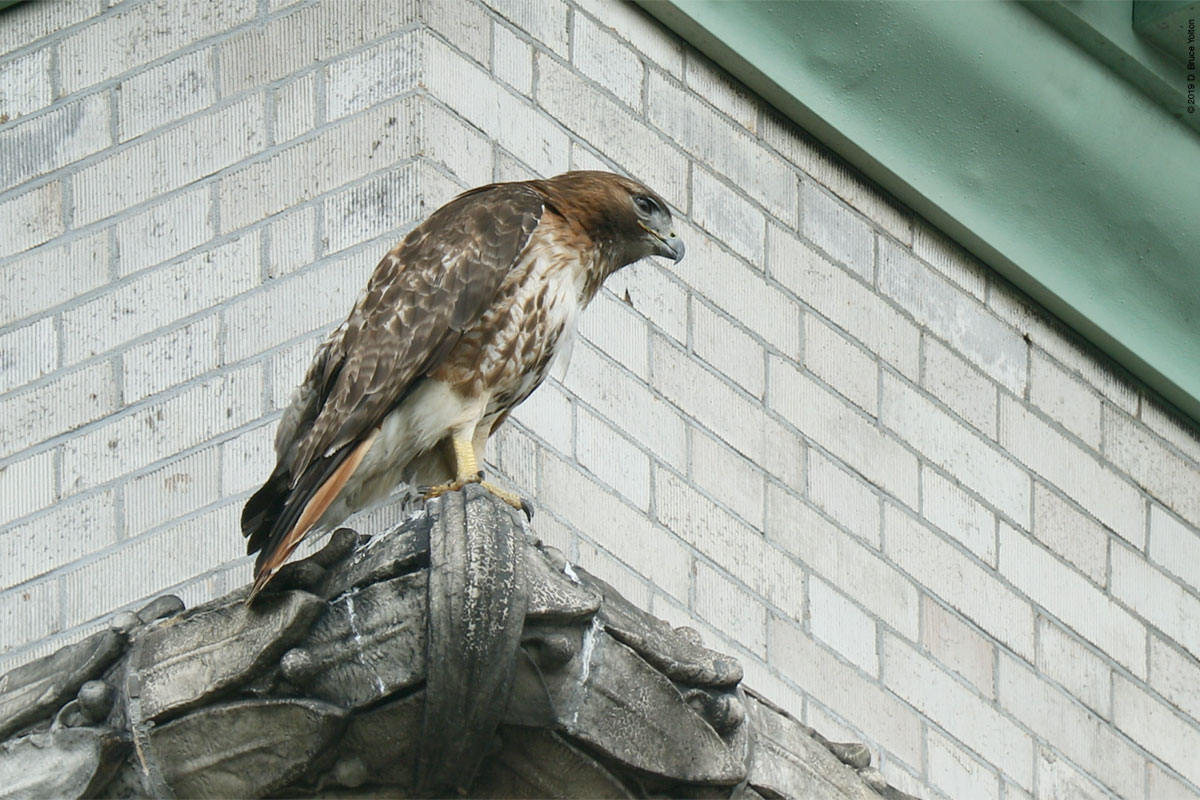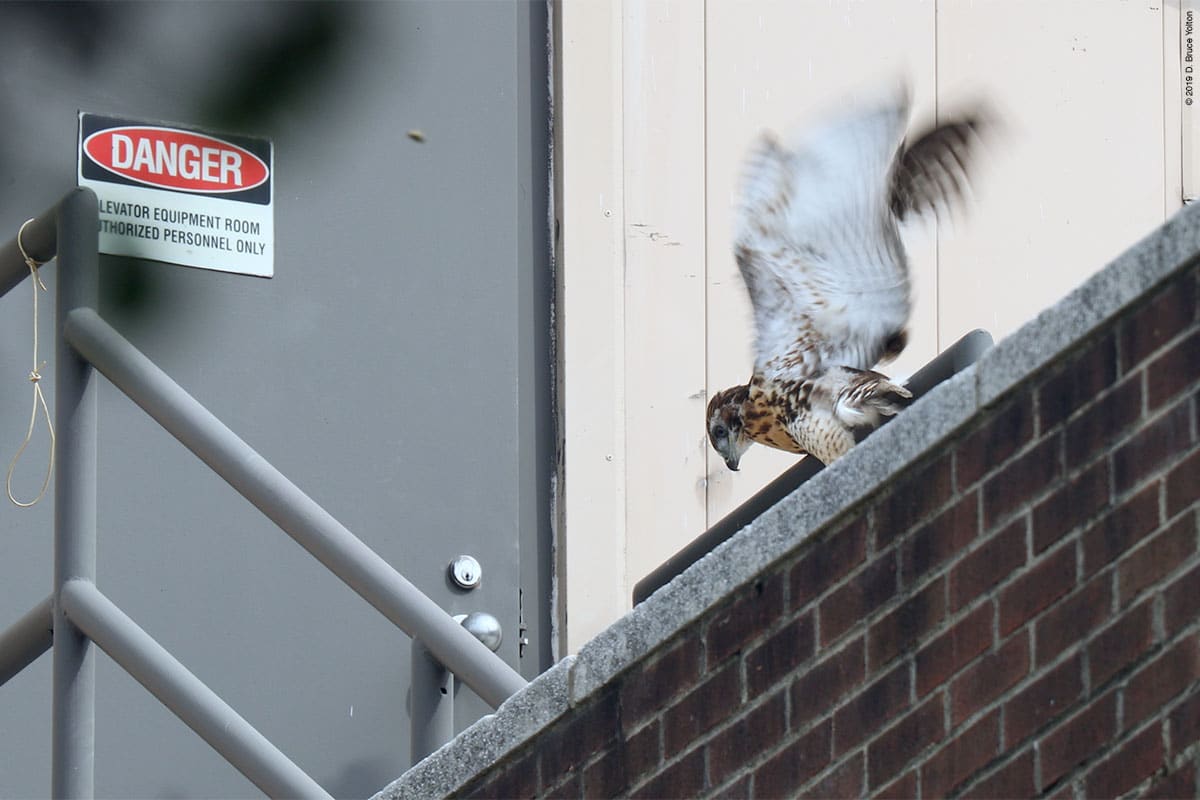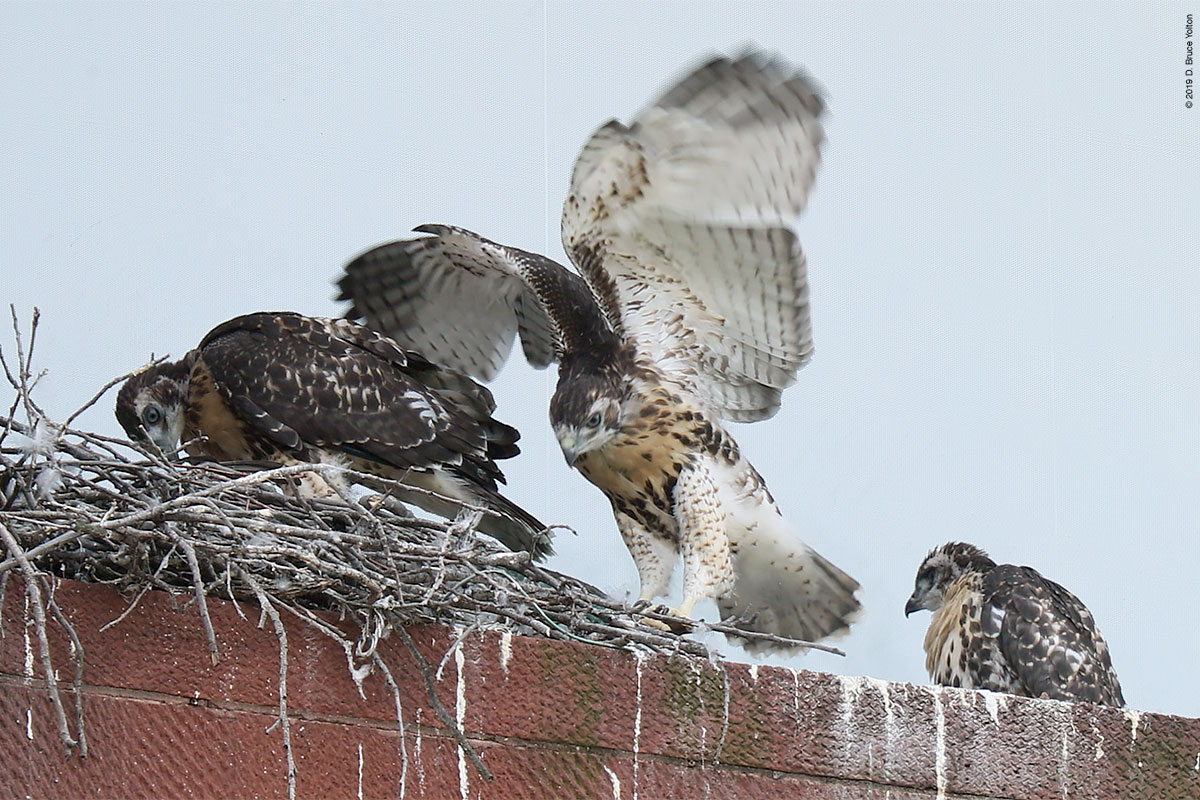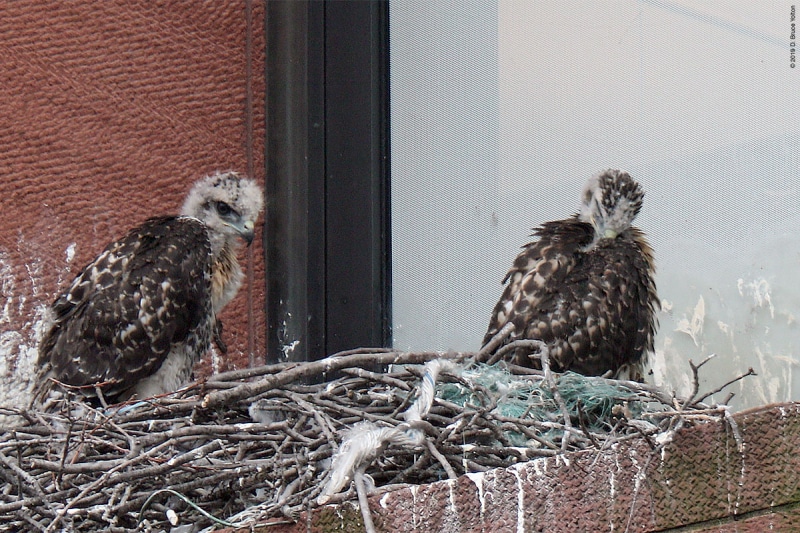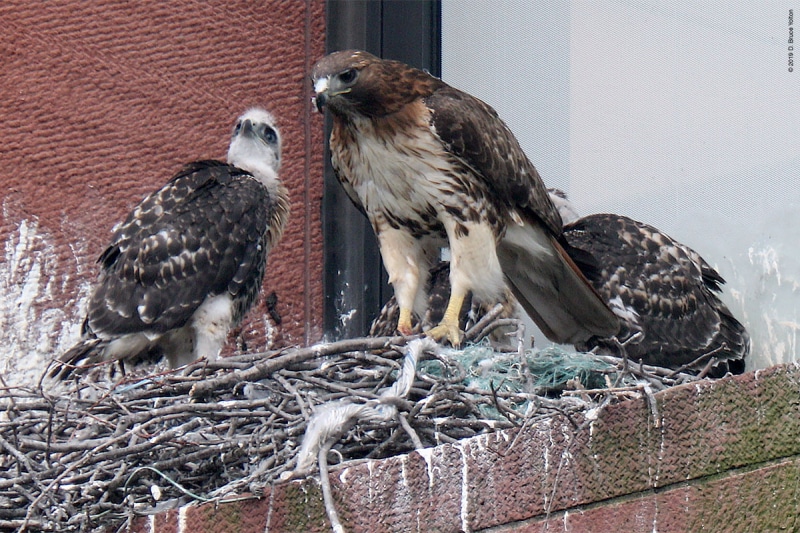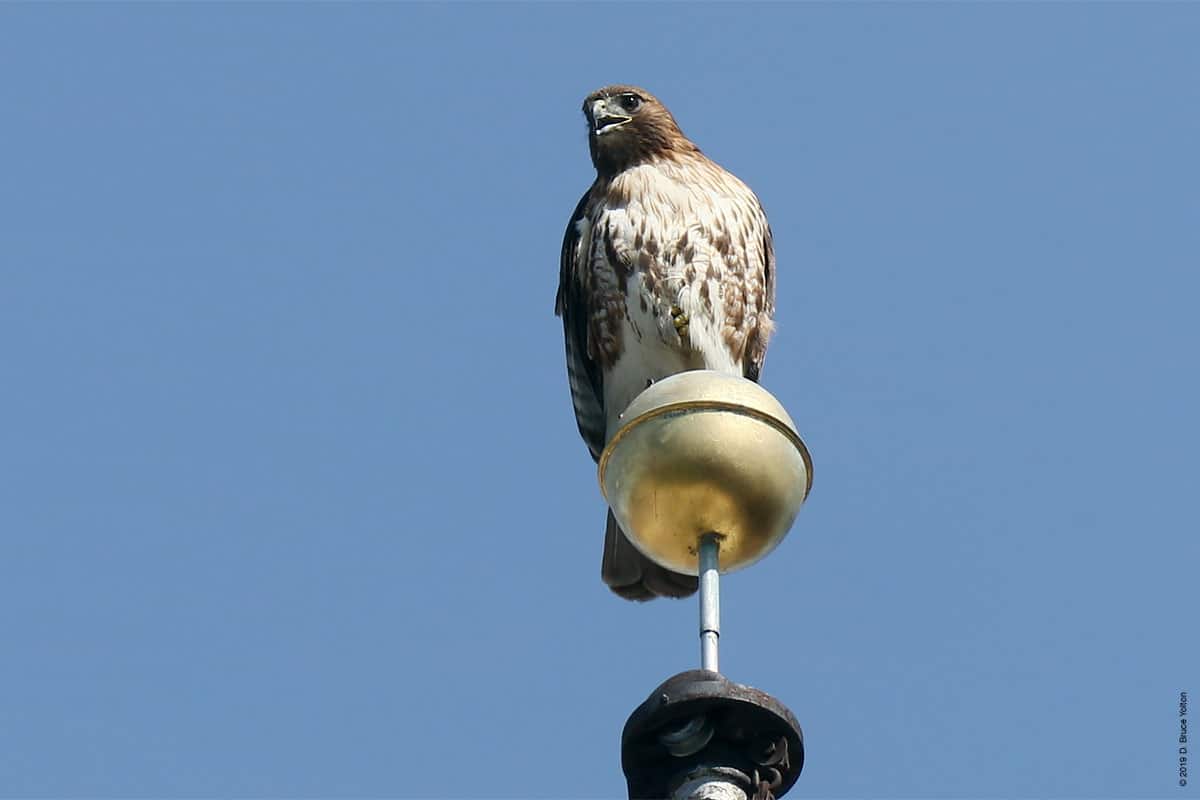Fledge Day!
I love fledge days. Washington Square Park had an eyass become a fledgling sometime early in on Friday morning. I slept in, so I don’t know exactly when! I got down to the nest in the early afternoon. Thanks to a report from a building engineer, the fledgling was discovered on the roof of the Goddard Building. It was on set of stairs to an equipment room which has been a favorite spot for fledglings in past years. It looked great and seems to have made its first trip without any issue.
The two remaining eyasses stayed on the nest but certainly were interested in looking at what was going on “down below”.
What was really interesting is that the new adult male who has been in territory this week, and whom the female has becoming more tolerant of, charged the fledgling in the late afternoon. Could it be possible that the new male is responding to the fledgling as a competitor rather than a child to help raise?
(The fledgling was no worse for wear by the way. The adult male’s behavior reminded me of fledglings who fight over food or sticks.)
I thought we’d be in for some surprises but this isn’t what I was expecting. I thought we might see the new male bring food to the fledgling, as a way of bonding with the female on on fledge day. But instead we saw some aggressive behavior.
I will be interesting to see what happens when the fledgling starts crying for food. Will this trigger some switch in behavior by the male?
I’m so excited to see how this turns out. I’m enjoying the front row seat Washington Square Park and the NYU Webcam is giving us to watch hawk behavior.










